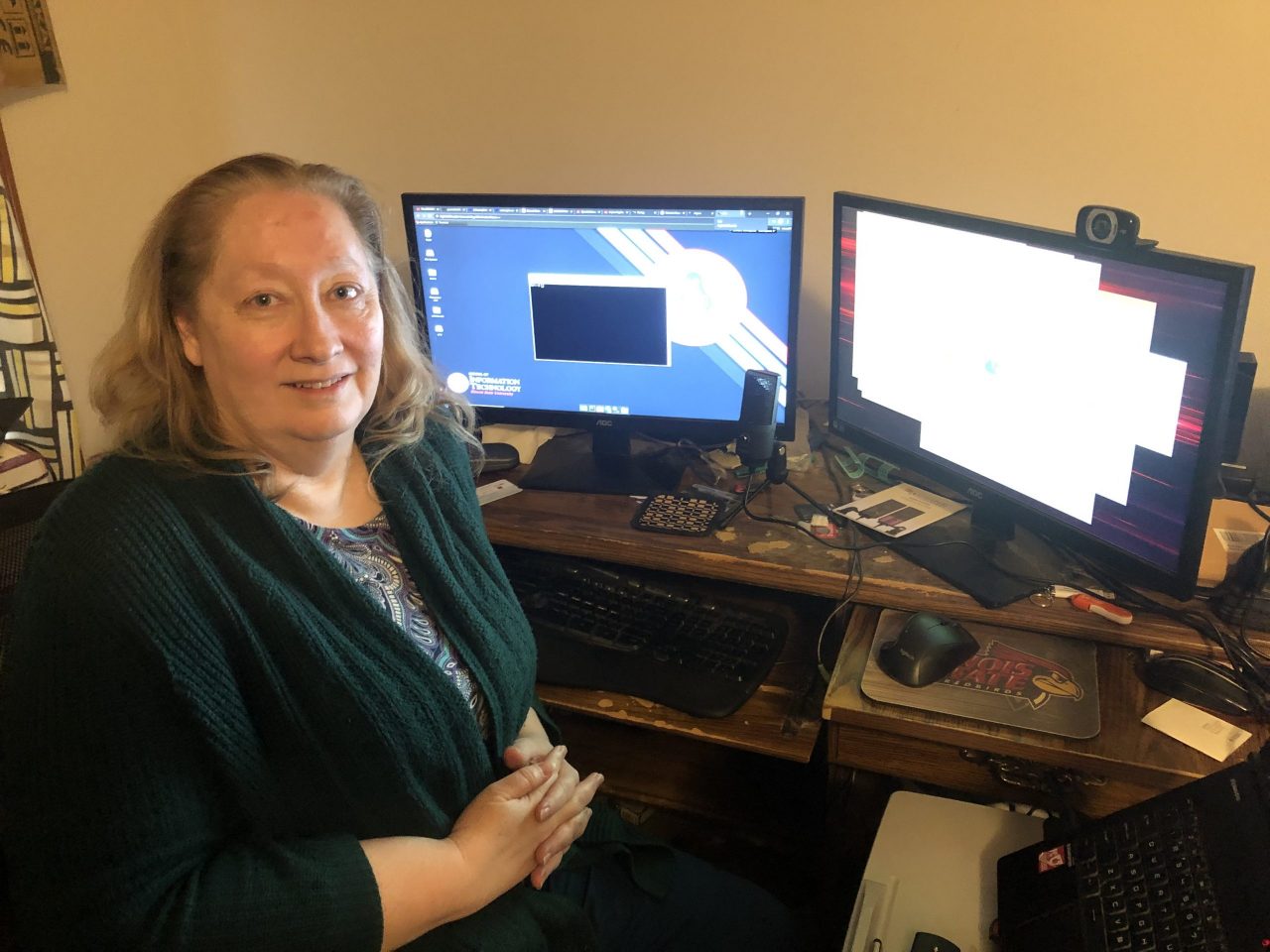The past few weeks have been nothing short of challenging with the outbreak of COVID-19. In a bid to stay safe and flatten the curve, people around the globe are working from home. It’s new territory and the College of Applied Science and Technology (CAST) is invested in ensuring faculty, staff, and students have all the resources they need in this period. In this new series of articles, members of the CAST faculty share their experience teaching online.
Dr. Mary Elaine Califf, professor in the School of Information Technology, agrees that the transition to teaching online has been somewhat challenging.
“I had never taught online prior to March 17, and this was actually my first semester back teaching full-time after a number of years in administrative roles. I was fortunate to have learned a lot about online teaching while I was a school director, but knowing about something is very different from doing it. The big difference in teaching online is the extra time it takes. I am used to walking into one of my courses and going through examples on the board off the top of my head because the course is very familiar, and I can construct an example that is helpful to student learning on the fly after many years of experience. In this format, I don’t have a big whiteboard to cover, so I have to think about what the best format is for a given kind of problem and plan the problems carefully in advance. I have chosen to teach my classes synchronously since I think preparing a good asynchronous class would be even more time-consuming,” she said.
Further, Califf encourages feedback in her classes as some students turn their cameras on in class. In addition to teaching online, she has also found that grading is now more time consuming for certain kinds of assignments that used to be physically turned in.
“I have always preferred to do a lot of class preparation, grading, and research from home,” Califf said. “I do miss interacting with both my students and my colleagues in person.”
For Califf, it is essential to have a good computer setup with a decent webcam and microphone as well as good internet to work from home. She also finds a whiteboard helps to work through problems that might require her to draw.
“I have used the ability to share the iPad in Zoom, along with a program called Notability to get a small but reasonable whiteboard substitute for those days when I need to draw diagrams for students,” she said. “For other demos, I have used Word and Excel and even written programs to help demo particular concepts. I have used Zoom very heavily since I’m doing synchronous teaching. I am posting recordings of my class in ReggieNet for students to review, so I’m using Camtasia to edit those. For one of my classes, recordings are too long to be uploaded to ReggieNet, so I got an Office365 video channel set up for that course.”
We can all agree that everyone is trying to adjust to the current situation. Califf shares some advice on navigating this period.
“Understand and accept that some things are going to take longer,” she said. “I think that’s true both because of being online and because of the stress we are under right now whether we realize it or not. That goes beyond grading and class preparation. For example, an exam that I normally give in a 50-minute class was a struggle for students to complete in 90 minutes. Faculty need to be aware of what the longer times mean for themselves and for students.”
She advises faculty to ensure decent internet access and have two monitors if possible.
“Having two monitors allows me to have whatever I am showing students on one screen, while the other can show chat, the list of participants, and participants’ video,” she said. “Even if students don’t turn on their cameras, Zoom will highlight whoever is speaking, which is helpful. For students, if two monitors are an option, it can allow them to use one to follow the class and the other to take notes or follow along on a demo.”
Finally, it is important to forgive yourself.
“In a circumstance like these, not everything will go well,” Califf said. “Do the best you reasonably can and move on.”
Illinois State University has a wealth of resources to support faculty, staff, and students in this period. For information and resources on navigating research, teaching, and learning online, please visit https://coronavirus.illinoisstate.edu/

